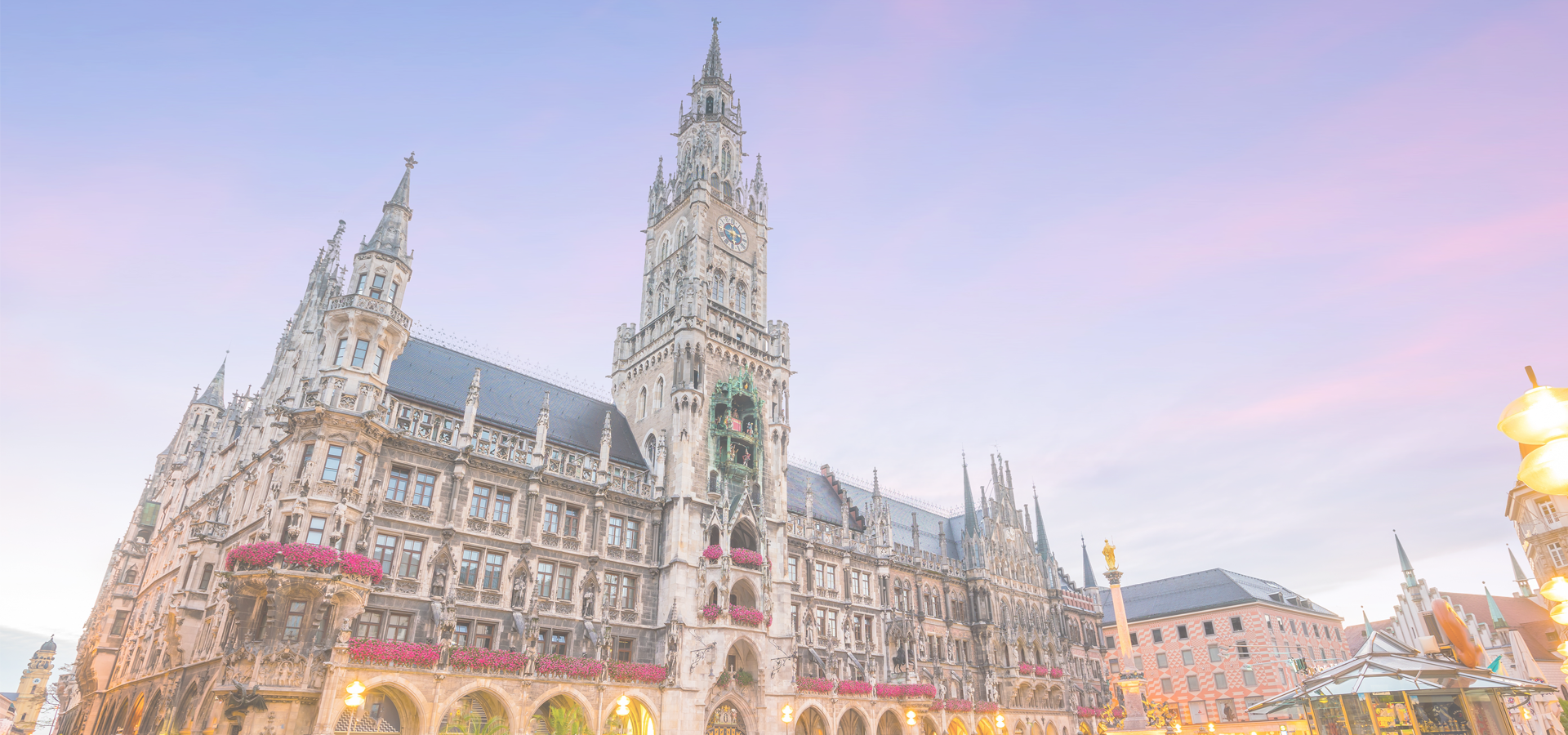Bad Tölz, Bavaria, Germany
🇩🇪 Bad Tölz is a town in Bavaria, Germany and the administrative centre of the Bad Tölz-Wolfratshausen district.
History Archaeology has shown continuous occupation of the site of Bad Tölz since the retreat of the glaciers at the end of the Ice Age. For example, there are finds from the Hallstatt culture as well as from Roman Raetia, or at least occupation by romanized Celts.
The name "Tölz" (as "Tolnze") appears relatively late in documentation at the end of the 12th century. The name "Reginried" appears as that of a settlement belonging to the monastery at Tegernsee in earlier texts, which is probably the same as Reid in the western part of Mühlfeld.
Hainricus de Tolnze built a castle on the site, which controlled the river and road traffic in the region but which no longer exists. In 1331, Louis IV made Tölz a market town.
The 14th century saw Tölz become a crossroads for the salt and lumber traffic on the Isar. In 1453, the market street, church, and castle were destroyed by fire. Duke Albrecht III enabled the city to rebuild, but this time in stone. He also built a palace which stood until 1770, when it fell into disrepair and was eventually undermined by the Ellbach.
The Thirty Years' War (1618–1648) brought plague and destruction to the region. During the War of the Spanish Succession things began to turn around again, with trade in lime and wood products, among other items. During this war, in 1705, the vintner Johann Jäger of Tölz led a band of farmers to battle at Sendling (south of Munich). The town also became known as a pilgrimage site; every November 6, there is a festival to Saint Leonard of Noblac. In 1718, a chapel was built in his honor on the Calvary hill.
In the middle of the 19th century, Tölz changed direction with the discovery of natural springs. The town began to focus on the healing properties of these springs and became a cure and spa town. In 1899, it became known as Bad Tölz.
In 1937, SS-Junker School Bad Tölz (an SS officer candidate training camp) was established near the town. The school operated until the end of World War II in 1945. A subcamp of the Dachau concentration camp was located in the town. It provided labour for the school and the Zentralbauleitung (Central Administration Building). Bad Tölz would also be the last town to be "passed through" by the Holocaust death march from Dachau to the Austrian border, that would be halted by Nisei U.S. Army artillery soldiers on 2 May 1945, just two km short of the next village to the east of it, Waakirchen. The former SS-Junker school was the base of the U.S. Army's 1st Battalion, 10th Special Forces Group until 1991. It was in Bad Tölz that Amon Göth, commandant of the Nazi concentration camp in Płaszów, in German-occupied Poland during World War II, was arrested and sent for trial in Poland.
Today, Bad Tölz is known for its spas, historic medieval town, and its views of the Alps. On the western bank of the Isar River lies the Kurverwaltung, or modern spa, whose iodine-rich waters are known for their soothing and healing powers. A major attraction was the Alpamare, Europe's first indoor water park with long water slides, wave pool, a surf wave, and a range of thermal outdoor pools with iodine water, until it closed in 2015. Another major attraction is Stadtpfarrkirche, a church built in 1466, which is an example of German late–Gothic architecture.
Geography Bad Tölz sits on the Isar River, 670 metres above sea level. It occupies 30.8 square kilometres.
Transport Bad Tölz is served by the Munich to Lenggries line of the Bayerische Oberlandbahn railway (Green Line).
Europe/Berlin/Bavaria

Bad Tölz has a population of over 19,186 people. Bad Tölz also forms the centre of the wider Bad Tölz-Wolfratshausen District which has a population of over 129,511 people. It is also a part of the larger Oberbayern Region.
To set up a UBI Lab for Bad Tölz see: https://www.ubilabnetwork.org Twitter: https://twitter.com/UBILabNetwork
Twin Towns, Sister Cities Bad Tölz has links with:
🇦🇹 Mayrhofen, Austria 🇮🇹 San Giuliano Terme, Italy 🇫🇷 Vichy, France🇩🇪 Pfaffenhofen an der Ilm 11.517
🇩🇪 Ludwigslust 11.499
🇩🇪 Neumarkt in der Oberpfalz 11.467
🇩🇪 Geretsried 11.467
Locations Near: Bad Tölz 11.55,47.75
🇩🇪 Geretsried 11.467,47.867 d: 14.4
🇩🇪 Miesbach 11.833,47.789 d: 21.6
🇩🇪 Starnberg 11.333,47.983 d: 30.6
🇩🇪 Munich 11.567,48.133 d: 42.6
🇩🇪 Munchen 11.567,48.133 d: 42.6
🇩🇪 Weilheim 11.157,47.833 d: 30.8
🇩🇪 Weilheim in Oberbayern 11.15,47.833 d: 31.3
🇦🇹 Schwaz 11.707,47.345 d: 46.5
Antipodal to: Bad Tölz -168.45,-47.75
🇹🇴 Nuku'alofa -175.216,-21.136 d: 16994.2
🇦🇸 Pago Pago -170.701,-14.279 d: 16287.5
🇼🇸 Apia -171.76,-13.833 d: 16231.2
🇵🇫 Papeete -149.566,-17.537 d: 16241.5
🇺🇸 Hilo -155.089,19.725 d: 12394.5
🇺🇸 Maui -156.446,20.72 d: 12307.6
🇺🇸 Maui County -156.617,20.868 d: 12294.1
🇺🇸 Wailuku -156.505,20.894 d: 12289.5